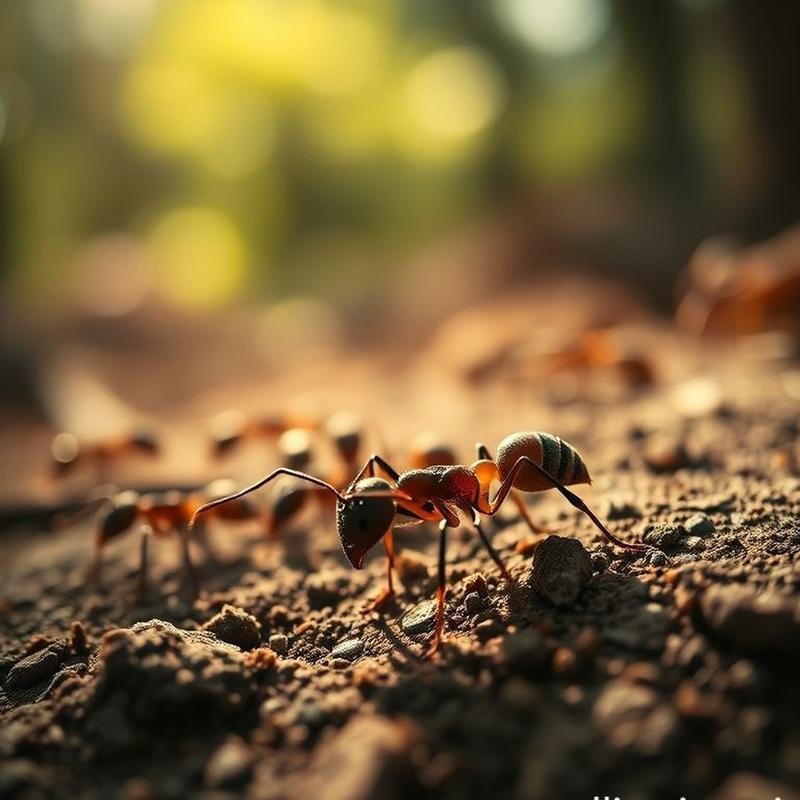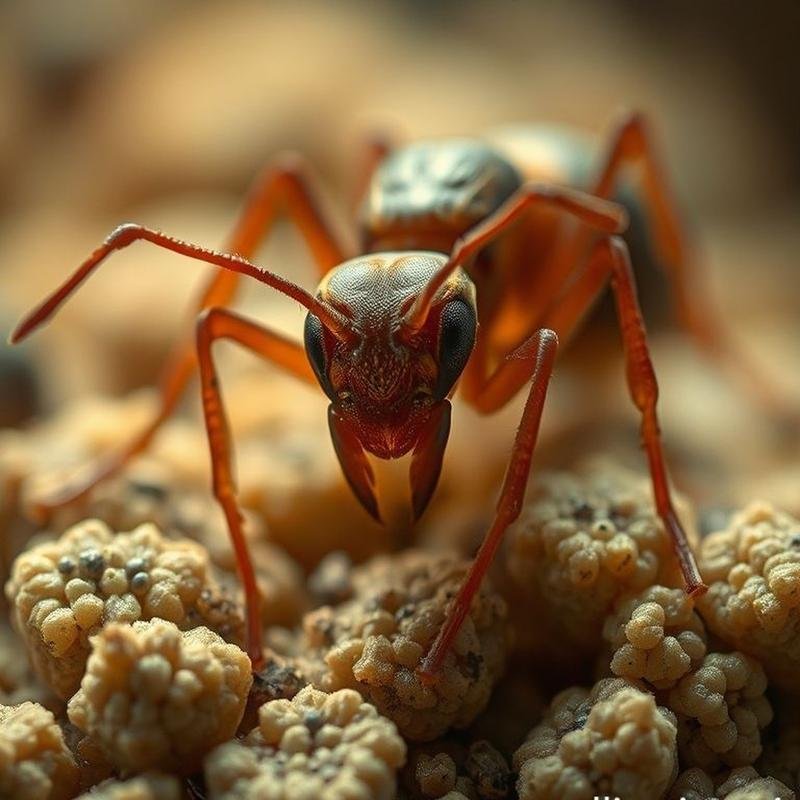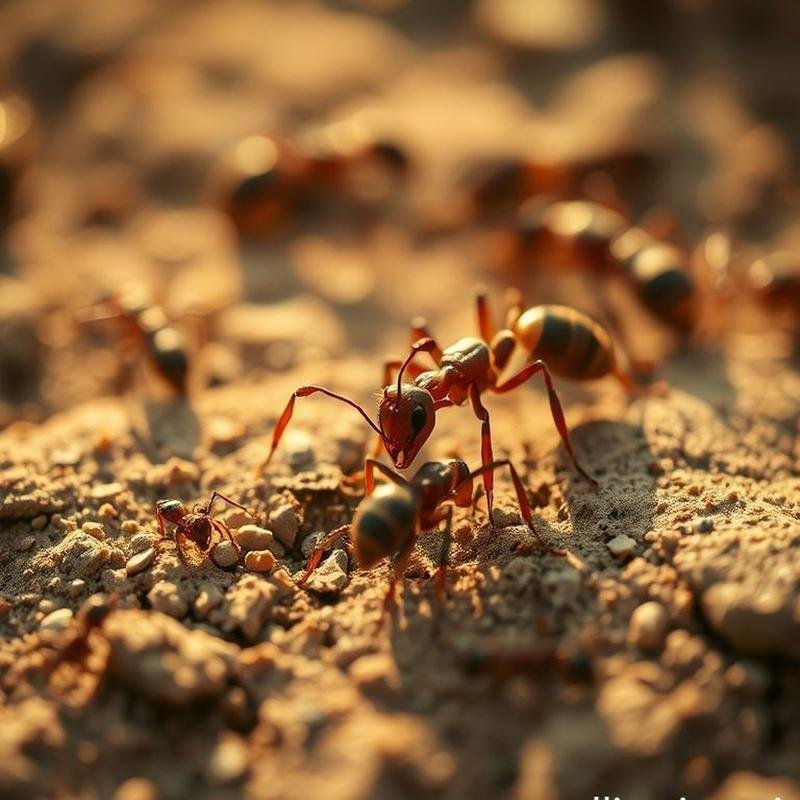Ant Colony Optimization: A Potential Solution for Complex Logistics Challenges?

Ant Colony Optimization: Logistics Revolution
Could the solution to the world’s most complex logistical challenges lie not in supercomputers, but in the seemingly random movements of ants? Imagine a future where the refined efficiency of an ant colony, honed over millennia, optimizes global supply chains, alleviates urban congestion, and revolutionizes urban planning. Could the key to resolving humanity’s most intricate problems already be encoded in the pheromone trails of these diminutive creatures?
Beyond conventional optimization techniques, we explore the remarkable world of ant colony optimization (ACO), a bio-inspired innovation quietly transforming logistics. Discover how the collective intelligence of ants is being leveraged to address problems that have confounded experts, potentially unlocking solutions that could reshape our world.
Before we delve into this world of miniature marvels, consider this: what is the first logistical puzzle these industrious ants might solve? Subscribe now to follow the unfolding of this fascinating mystery. Share your insights in the comments section below.
The Pheromone Trail: A Natural Algorithm
Imagine an ant, virtually blind to its surroundings, yet capable of identifying the shortest route to a distant food source. This is achieved not through sight, but through the subtle power of scent. Each ant deposits a pheromone trail, an invisible marker guiding its counterparts. The most frequently traveled path, inherently the shortest, becomes the most heavily scented. This simple behavior forms the basis of Ant Colony Optimization, or ACO.
In 1992, Marco Dorigo formalized this natural process into an algorithm he termed the Ant System. The core principle is stigmergy – indirect communication facilitated through environmental modification. Ants subtly alter their environment by depositing pheromones, which, in turn, significantly influence the behavior of other ants.
This seemingly straightforward concept has proven remarkably effective. ACO algorithms have demonstrated exceptional performance in solving the Traveling Salesman Problem, a logistical challenge that tests even the most advanced computers. These digital ants iteratively refine their routes, guided by the digital equivalent of pheromone intensity, represented by numerical values. While various ACO variants exist, each optimizing pheromone management and exploration strategies, their applications extend beyond route optimization, finding innovative uses in telecommunications, job scheduling, and even protein folding.
The Logistical Landscape: Challenges and Opportunities
However, even the most sophisticated algorithms must contend with the harsh realities of the logistical landscape. The Traveling Salesman Problem, a mathematical Everest, illustrates this complexity: even a 49-city tour, solved manually in 1954, presents a significant computational challenge. Consider scaling that to thousands of destinations.
Consider Vehicle Routing Problems (VRPs), where optimizing delivery routes promises savings of 5 to 20 percent. Yet, traffic patterns, narrow delivery windows, and fluctuating vehicle capacity create a complex web that can overwhelm even the most powerful supercomputers. Furthermore, warehouse costs can escalate by as much as 75 percent. Amazon, a logistical giant, invests over $60 billion annually in fulfillment alone. The bullwhip effect, a phenomenon where demand fluctuations amplify by as much as 40 percent as they propagate up the supply chain, further complicates matters. Last-mile delivery accounts for a staggering 53 percent of total shipping costs, a figure projected to increase by 78 percent by 2030. Even the standard truck, operating at a mere 50 percent utilization rate, reveals a significant opportunity for improved efficiency.
ACO in Action: Real-World Applications
The solution, surprisingly, lies with the ant. Solutions inspired by ant colonies, once a biological curiosity, are now revolutionizing industries. Eurocontrol, responsible for managing Europe’s complex airspace, has implemented ACO since 2000 to design optimized flight paths, conserving fuel and reducing delays. Industry leaders like Amazon and UPS utilize ACO to orchestrate their extensive delivery networks, achieving fuel consumption reductions of up to 20 percent. Researchers have demonstrated a 15 percent reduction in turnaround times by applying it to container loading operations in busy ports. From streamlining data flow in telecommunications networks to strategically positioning electric vehicle charging stations, and even accelerating emergency service deployments by Thales Group, the influence of ant colony optimization continues to expand. A study in the Journal of Heuristics confirms that ACO algorithms can achieve near-optimal solutions for the Traveling Salesman Problem in significantly less time than traditional methods.
Limitations and Future Directions
However, even the most elegant solutions have limitations. ACO faces significant computational demands. Processing requirements can increase substantially, particularly when dealing with large datasets, making it less practical for real-time decision-making. Furthermore, the evaporation rate and pheromone intensity often require meticulous, manual adjustment. Premature convergence, where simulated ants blindly follow a suboptimal path, remains a persistent challenge.
To fully realize ACO’s potential, researchers are developing hybrid algorithms, combining its strengths with techniques such as genetic algorithms and simulated annealing. Dynamic parameter control, which adjusts ACO’s internal mechanisms in real-time, offers another promising approach. Parallelizing ACO, leveraging the power of multi-core processors, is crucial to applying this algorithmic ant colony to the world’s most challenging logistical problems. Exploring dynamic and stochastic environments, enabling the algorithm to adapt in real-time, will soon become a reality.
Conclusion: A Future Inspired by Nature
The tireless activity of ants continues, their delicate legs tracing pathways toward a future where algorithms learn from nature’s profound ingenuity. Ant Colony Optimization, a concept originating from a PhD thesis in 1992, is now poised to revolutionize global logistics, potentially reducing fuel consumption by an impressive 15%. Forward-thinking companies like AntOptima are already shaping this reality, promising significant cost savings of up to 30%. Even the European Space Agency is utilizing ACO for satellite trajectory planning. The era of nature-inspired optimization has begun, signaling a world where efficiency and elegance advance in tandem.
The transformative power of ant colony optimization extends beyond mere logistical efficiency; it represents a fundamental shift in how we approach complex problem-solving, drawing inspiration from the intricate, self-organizing systems that thrive in the natural world. This bio-inspired approach not only offers practical solutions to pressing challenges but also provides a powerful metaphor for collective intelligence and the potential for decentralized systems to achieve remarkable feats.
As we witness the rise of ant colony optimization in diverse fields, from supply chain management to urban planning, a profound question emerges: How else can we harness the wisdom of nature to solve the challenges of tomorrow, and what other hidden algorithms might be waiting to be discovered in the intricate tapestry of the natural world? Share your thoughts and insights in the comments below.










